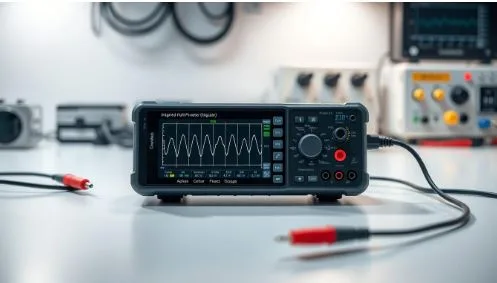What Is The Best Time Frame For Crypto Trading
Crypto markets. They never sleep, right? One minute Bitcoin’s mooning, the next it’s taking a dive that makes your stomach lurch. It’s thrilling, terrifying, and utterly addictive. But here’s the million-dollar question (or maybe the million-Satoshi question): What is the best time frame for crypto trading?
Honestly? There is no single “best” time frame for everyone. Shocking, I know! It’s like asking what’s the best pair of shoes. Depends if you’re running a marathon, hiking a mountain, or just popping to the shops. Your ideal trading window hinges completely on who you are as a trader – your personality, your goals, your schedule, and frankly, your stress tolerance.
Let’s break down this crucial concept and figure out where you might fit in this fast-paced world.
What Exactly Is a Trading Time Frame? Breaking Down the Charts
Before we dive into finding your best time frame for crypto trading, let’s get crystal clear on what we mean. Think of a time frame as the lens through which you view the market’s price action. It dictates:
- The “Candlestick” Duration: How long does each individual candle on your chart represent? One minute? Five minutes? One hour? One day? One week?
- Your Holding Period: Roughly how long do you expect to hold a trade once you enter it? Seconds? Hours? Days? Weeks? Months?
- Your Analysis Scope: Are you zoomed in, scrutinizing every tiny wiggle, or zoomed out, looking for the broader trend?
Choosing your time frame is like picking your telescope’s magnification. Too high, and you see every bump but miss the landscape. Too low, and you see the landscape but miss the critical details on the path. Getting this right is fundamental.
Exploring the Crypto Trading Time Frame Spectrum
The crypto market offers a smorgasbord of time frames. Let’s tour the most popular ones, weighing their unique flavors:
Scalping: The Blink-and-You-Miss-It Dash (Seconds to Minutes)
- Time Frames Used: 15-second, 1-minute, 5-minute charts.
- Holding Period: Seconds to a few minutes. You’re in and out like lightning.
- The Vibe: High-octane, adrenaline-fueled. Scalpers aim to profit from tiny price movements, dozens of times a day. It’s like catching falling knives (very carefully!) or surfing micro-waves.
- Pros: Potential for quick, frequent profits (in theory). Less exposure to overnight risk. Thrilling (if that’s your thing).
- Cons: Extremely stressful! Requires intense focus, lightning-fast execution, and nerves of steel. Transaction fees can eat profits alive. You need top-tier tech and a direct market access (DMA) broker. Miss one candle, and your trade can implode.
- Best For: The ultra-disciplined, tech-savvy, full-time trader with ice water in their veins. Not for the faint of heart or those with day jobs.
Day Trading: Riding the Daily Rollercoaster (Minutes to Hours)
- Time Frames Used: 5-minute, 15-minute, 30-minute, 1-hour charts (often analyzing higher time frames like 4-hour for context).
- Holding Period: Minutes to hours. All positions are closed before the market “closes” (though crypto never truly closes).
- The Vibe: Still fast-paced, but less frantic than scalping. Day traders capitalize on intraday volatility, often driven by news events or technical patterns playing out within the session. Think of it as catching the bigger waves within the daily tide.
- Pros: Avoids overnight gap risk (significant price jumps when you’re not watching). More breathing room than scalping. Can generate consistent returns with skill.
- Cons: Still requires significant screen time and focus. Stress levels remain high. Requires solid risk management as losses can accumulate quickly.
- Best For: Traders who can dedicate several focused hours daily. Those comfortable with technical analysis and managing quick decisions. Offers a balance between speed and analysis for many.
Swing Trading: Catching the Market’s Waves (Days to Weeks)
- Time Frames Used: 1-hour, 4-hour, Daily charts (primary analysis), often checking Weekly for trend.
- Holding Period: Several days to several weeks.
- The Vibe: More relaxed, strategic. Swing traders aim to capture the “swings” or momentum moves within a larger trend. They aren’t bothered by intraday noise. It’s like sailing – you set your course based on the weather (trend) and ride the waves (swings).
- Pros: Less time-intensive than day trading or scalping. Allows for a day job or life outside charts! Profits per trade are generally larger. Easier to manage psychologically for many.
- Cons: Requires patience to wait for setups. Exposed to overnight and weekend risk (where big moves often happen in crypto). Needs strong technical and fundamental analysis skills to identify sustainable trends.
- Best For: Most part-time traders. Those with patience and analytical skills. Individuals who prefer a less frantic pace but still want active involvement. Often considered a potential best time frame for crypto trading for those seeking a balance.
Position Trading & HODLing: The Long Game (Weeks to Months/Years)
- Time Frames Used: Daily, Weekly, Monthly charts.
- Holding Period: Weeks, months, or even years (the famous “HODL”).
- The Vibe: Calm, macro-focused. Position traders are investors at heart, betting on long-term trends based on fundamental analysis (technology, adoption, regulations). HODLers simply buy and hold, believing in the asset’s long-term value regardless of volatility. Think marathon, not sprint.
- Pros: Least time-intensive. Minimal stress from daily fluctuations. Leverages the long-term upward trend of quality assets (historically). Compounding potential.
- Cons: Requires immense patience and conviction. Significant drawdowns (paper losses) are common and must be endured. Tied up capital for long periods. Requires deep fundamental research.
- Best For: Long-term investors. Those with strong conviction in specific projects. Busy individuals who want crypto exposure without constant monitoring. True believers.
How To Discover Your Personal Best Time Frame for Crypto Trading
So, how do you sift through these options and find your Goldilocks zone? Ask yourself these crucial questions:
- What’s My Personality? Are you naturally patient or impulsive? Do small losses rattle you, or can you see the bigger picture? Scalping needs aggression and resilience; swing trading needs patience; HODLing needs Zen-like calm.
- What Are My Goals? Quick income supplement? Building long-term wealth slowly? Your goals drastically shape the viable time frames. Scalping might offer quick cash (with huge risk), while position trading builds wealth slowly.
- How Much Time Do I Really Have? Be brutally honest. Can you stare at charts for 8 hours? Or do you have 30 minutes before work and after dinner? Your lifestyle dictates what’s feasible. Trying to scalp with a full-time job is a recipe for burnout and losses.
- What’s My Risk Tolerance? Can you stomach seeing 10% vanish in minutes? Or does even a 2% daily dip keep you up at night? Shorter time frames inherently mean faster price movements and potentially sharper losses.
- What’s My Experience Level? New traders overwhelmingly underestimate the difficulty of scalping and day trading. Starting with swing trading on higher time frames (like 4-hour or Daily) is often recommended to learn without the intense pressure.
Crucially, don’t just pick one! Most successful traders use multiple time frame analysis (MTFA). They might:
- Use the Weekly chart to identify the primary trend (bullish or bearish?).
- Use the Daily or 4-hour chart to find the prevailing swing direction within that trend.
- Use the 1-hour or 15-minute chart for precise entry and exit points.
This layered approach gives context. Trading against the primary trend on a lower time frame is usually fighting an uphill battle.
Important Factors Influencing Time Frame Choice in Crypto
Beyond your personal fit, remember the unique nature of crypto:
- Extreme Volatility: Crypto moves fast. What looks stable on a daily chart can be a rollercoaster on a 5-minute chart. Ensure your chosen time frame matches your volatility tolerance.
- 24/7 Market: While an advantage, it also means news can hit anytime, causing sudden moves. Shorter time frames are more exposed to this.
- Liquidity & Volume: Trading illiquid coins on very short time frames is incredibly risky – spreads widen, and slippage can kill profits. Stick to major pairs (BTC, ETH) for scalping/day trading.
- News Events: Major announcements (regulations, exchange listings, hacks) can override technical setups on any time frame instantly. Always be aware of the news calendar!
Experimentation Is Key: Finding Your Trading Rhythm
Finding the best time frame for crypto trading for you isn’t a one-time decision. It’s a journey. Here’s how to navigate it:
- Start Paper Trading: Test different time frames risk-free! See how your emotions and decision-making hold up on 1-minute vs 1-hour charts. Does one feel more natural?
- Begin Conservatively: If new, start with swing trading concepts on the 4-hour or Daily chart. Get comfortable with analysis and risk management before shortening your view.
- Be Honest in Your Review: Analyze your trades. Are you consistently profitable on your chosen time frame? Or are losses piling up due to impulsive decisions or missed signals better seen elsewhere? Your results will tell you if you’re in the right lane.
- Don’t Be Afraid to Adjust: As you gain experience, your life changes, or market conditions shift, your ideal time frame might evolve too. That’s perfectly normal.
Conclusion
So, circling back to that burning question: What is the best time frame for crypto trading? The definitive answer is… it depends entirely on YOU.
There’s no magic setting that guarantees profits. The scalper thrives on chaos the position trader ignores. The day trader finds opportunity where the HODLer sees noise. The true best time frame for crypto trading is the one that aligns seamlessly with your individual psychology, your available time, your financial goals, and your risk appetite.
It’s the lens that brings the market into focus for you, allowing you to execute your strategy with confidence and discipline. Don’t chase someone else’s definition of “best.” Experiment thoughtfully, analyze ruthlessly, and be honest with yourself. Finding that sweet spot – your personal rhythm in the relentless pulse of the crypto markets – is the real key to sustainable trading.






